The non-contact inductance sensor is positioned as a sensor capable of reacting to metal objects caught in its electromagnetic field. Thanks to this property of inductive proximity sensors, it is possible to track the movement of moving parts of the equipment and, if necessary, turn off the motor of the drive mechanism. To recognize and analyze changes in the magnetic field, a special electronic unit called a controller (comparator) is introduced into their composition.
Device and principle of operation
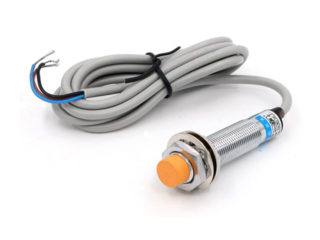
Induction position sensors, in addition to an electronic comparator, contain the following mandatory components:
- steel case with connector for connecting cord;
- a built-in sensitive element that records changes in the magnetic field is made in the form of a steel core with a coil;
- executive relay module;
- activation indicator on the LED.
The design of different models of metal sensors may have some differences. They do not affect the induction sensor itself, the principle of its operation does not change from this.
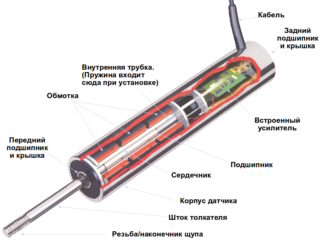
In accordance with the device of the device, the essence of its operation is described as follows:
- moving the metal part of the controlled object leads to a change in the inductance of the sensitive element of the sensor;
- the deviation is explained by the distortion of its magnetic field, the result of which is a change in the parameters of the electrical circuit and its activation (the LED lights up);
- after that, the electronic module is triggered and sends a signal to the executive device;
- when a pulse is received about exceeding the permissible limit by movement, the output (relay) node disconnects the monitored equipment from the network.
Each model has its own motion sensitivity - offset gap. For different samples, this parameter varies from 1 micron to 20 millimeters.
Inductive sensor parameters
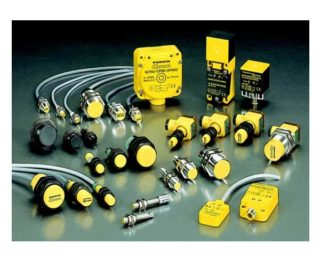
In addition to the response range or sensitivity, an inductive sensor is characterized by the following performance indicators:
- The size (diameter) of the landing thread, for various samples, taking values from 8 to 30 mm.
- Nominal supply voltage at a temperature of plus 20 degrees, up to 90 Volts DC and up to 230 Volts - alternating currents.
- Overall body length - its value depends on the operating voltage.
The latter indicator for different samples can vary significantly.
For the sensitive or active zone of the device, another parameter is introduced, called the guaranteed response limit. Its lower limit is zero, and the upper one is 80 percent of the nominal value. This indicator is sometimes called the working clearance correction factor.
An equally important indicator of the functionality of a sensitive device is the number of connecting wires in the connector. Usually there are two or three of them: two supply and one for activating the circuit. However, connection options are possible in the arrangement of which four or five contact points are used. Similar samples, in addition to two supply conductors, contain two outputs to the load. In this case, the fifth conductor is used to select the operating mode of the device itself.
Types of outputs and connection methods
To assess the action of a sensitive device, a special characteristic is introduced, evaluated by the state of the polarity of its output parameters. In accordance with the generally accepted designation of semiconductor elements (transistors) included in the electronic circuit of the sensor, these outputs are called "PNP" and "NPN".
The difference between these names is that they denote different polarities (poles) of the power supply of sensitive devices. PNP transistors switch its positive output, and NPN - negative. The load of the output circuits is most often the control microprocessor.
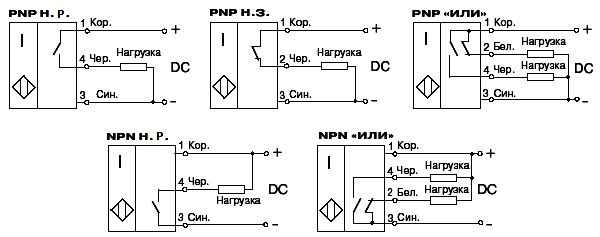
Depending on the control scheme of the controller, inductive sensors are designated as HO (normally open) or HZ - with a normally closed input.
The NPN transistor option is the most common way to turn on the sensor, as standard circuitry makes the negative wire common to all components. In this case, the inputs of microprocessors and other monitoring devices are activated with a positive voltage.
Connection marking
On schematic diagrams, inductive sensors are usually denoted as a rhombus or square with two vertical lines inside. Often they also indicate the type of output (normally open or closed), corresponding to one of the varieties of semiconductor transistors. Most circuit options indicate a normally closed group or both types in the same housing.
Lead color coding

In practice, a standard system of marking the leads of inductance sensors is used, which is adhered to by all manufacturers of sensitive devices without exception. Nevertheless, before installing them, it is recommended to carefully observe the polarity of the connection and be sure to check the instructions supplied with the products.
All sensors have a color-coded wire drawing on their housings, if the size allows it.
Standard order of designation:
- blue (Blue) always means negative power rail;
- brown color (Brown) denotes a positive conductor;
- black (Black) corresponds to the sensor output;
- White is an auxiliary output or input.
To clarify the last marking designation, it should be checked against the data of the instructions attached to the specific device.
Sensor errors
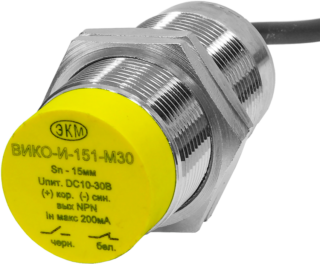
The error in taking readings by the control system significantly affects the operation of the non-contact inductive sensor. Its total value is collected from individual measurement errors for various indicators: electromagnetic, temperature, hardware, magnetic elasticity and many others.
Electromagnetic error is defined as a randomly occurring quantity. It appears due to a parasitic EMF induced in the coil by external magnetic fields. In a production environment, this component is created by power equipment with an operating frequency of 50 Hertz. Temperature error is one of the most important indicators, since most sensors can work only in a certain temperature range. It must be taken into account when designing devices of this class.
The error of magnetic elasticity is introduced as an indicator of the instability of the core deformations that occurs during the assembly of the device, as well as the same factor, but manifests itself during its operation. The instability of internal voltages in the magnetic circuit leads to errors in the processing of the output signal. The error arising in the most sensitive device appears due to the influence of the field structure on the coefficient of deformation of the metal elements of the sensor. In addition, its total value is significantly affected by backlash and clearances in the moving parts of the structure.
The error of the connecting cable is taken from the deviations of the resistance value of its wire cores depending on the temperature factor, as well as the induction of extraneous electromagnetic fields and EMF. The strain-gauge error as a random variable depends on the manufacturing quality of the winding elements of the sensor (its coils, in particular). Under various operating conditions, it is possible to change the DC resistance of the winding, leading to the "floating" of the output signal. Aging error is manifested due to wear of the moving elements of the sensor, as well as changes in the electromagnetic properties of the magnetic circuit.
It is possible to check the real value of this parameter only with the help of ultra-precise measuring instruments. In this case, the kinematic features of the sensor itself must be taken into account. When designing and manufacturing sensitive elements, this possibility is taken into account in advance in its design.
Inductive and capacitive sensors are characterized by modes of operation with many influencing factors determined by specific operating conditions. That is why the choice of sensitivity and a set of output parameters suitable for a given brand of device is decisive when using it as a limit switch.








